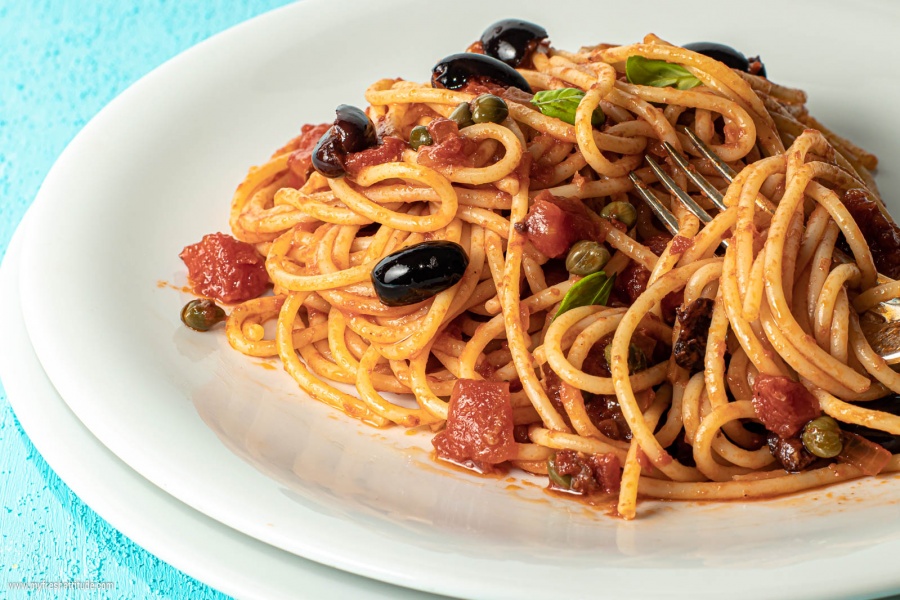
Puttanesca Sauce
This is one of my favorite pasta sauces. I could stop my description with that simple sentence because it says everything in those eight words…but I will continue and explain why I am infatuated with this sauce.
Let’s start with balance. I am a big believer in creating balance between sweet, salty, acid and bitter whenever I create and cook a recipe. I think a bit of umami in the food also helps, but for me, the key is getting the four taste elements to harmonize peacefully.
I doubt the original creators of Puttanesca thought of this balance, but that
Subscription Required For This Content
This is one of my favorite pasta sauces. I could stop my description with that simple sentence because it says everything in those eight words…but I will continue and explain why I am infatuated with this sauce.
Let’s start with balance. I am a big believer in creating balance between sweet, salty, acid and bitter whenever I create and cook a recipe. I think a bit of umami in the food also helps, but for me, the key is getting the four taste elements to harmonize peacefully.
I doubt the original creators of Puttanesca thought of this balance, but that is what they achieved. The sweet elements come from the cooked tomatoes, stewed onions and the slight amount of fat used. The acid elements are from the wine, tomatoes and capers. The salty bits come from the olives and capers. The bitter elements come from the pasta tossed into the sauce and the olives. And finally, there is a hint of umami from the capers and olives (originally, anchovies were added, but I think adding a bit of the caper brine does the same thing). When properly prepared, the tastes combine pleasantly and the flavors burst in the mouth. It is perfection in a pasta sauce!
Another reason I love this sauce is because it is modular. It can be served as a simple tomato and onion sauce, a tomato sauce with olives and capers or the full puttanesca experience – depending on your mood or what you serve with it. Personally, I think spaghetti works best for Puttanesca, but I wouldn’t hesitate to serve penne-type pasta or something like a rigatoni.
The history of Puttanesca is interesting – something I like to keep in mind while making classic recipes. The literal translation from the Italian word Puttanesca is ‘in the style of prostitutes.’ There are plenty of theories as to why this Neapolitan sauce took on such a name – none of which I can verify. But I think it has plenty to do with the spicy nature of the sauce mixed with the pungent aromas of garlic, capers, olives and originally anchovies. Maybe the perfume reminded someone of a prostitute.
Difficulty: simple
Yield: enough for about 4-6 servings